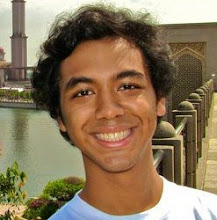(A little detour from the Jogja-Solo journey posts.)
After months of being a TransJakarta victim–an experience I have frequently shared in my previous blog–I adapted to ensure my survival and discovered a faster route to my nest. Now, instead of riding TransJakarta all the way, I take a shortcut by taxi to the Corridor I in Sudirman and get on the bus there. No need to change buses, which drastically reduces waiting time. Let’s just say that at least it halves my travel time.
Today, I hailed a taxi in front of my campus for the first leg of my trip home. When I told the driver that I’m going to a TransJakarta bus stop, he asked whether I’m going to take the bus there. I just nodded and he continued, “It’s a mess, a failure.”
“Yes, indeed. If I get on the bus here, it will waste a lot of precious time. Better to just ride Corridor I,” I honestly replied.
He proceeded bashing Sutiyoso’s pet project. For one, TransJakarta steals road lanes from other road users, yet it does not utilize them optimally. It is definitely not a smart move, considering that there is more car and motorbikes than all of Jakarta’s streets can handle. He summarized that TransJakarta does not alleviate the city’s chronic traffic jams. In fact, in some places it worsens the gridlock.
Next he attacked the management, saying that too many hands are drawing the picture, resulting in utter chaos. TransJakarta’s nine corridors are operated by different companies and they are not very nice to each other. Jakarta’s transportation agency fails to integrate its busway; I’m not expecting them to integrate it with rail service and the mythical waterway.
Those complaints came from a taxi driver, and whether he knows it or not, that shows genuine care for his city and its people. He drives around, gets stuck in the choking traffic jam, and sees all that’s speeding in the wrong direction. Like it or not, he has to witness it all. I can not belittle him by saying “it’s easy for you to complain” because that is what he can do. I don’t want him to use his deadly ninja skills to hijack the whole TransJakarta operation.
On the other side, there are those who actually have the power to make the change. In Jakarta, one of them is called the Governor. The law gives them power to place things in the right spots and to make sure that whatever that thing is, it keeps on working efficiently. They can get things from the wrong place back to the right place.
But where are they? I don’t see them complain about how Jakarta’s traffic problem is getting worse and is routinely complicated by the flood, let alone make decisions to solve the problem. The blaring sirens of their motorcade proudly roars to the world that they are above being trapped in traffic. They can afford to not see the mess they are living in everyday. They can live without caring.
The traffic problem is but a pebble in Jakarta’s mountain of problems, yet it can give a hint why we are not seeing real solutions. Instead, we are forced to cope with ephemeral glitzy projects that dies before the day ends.












